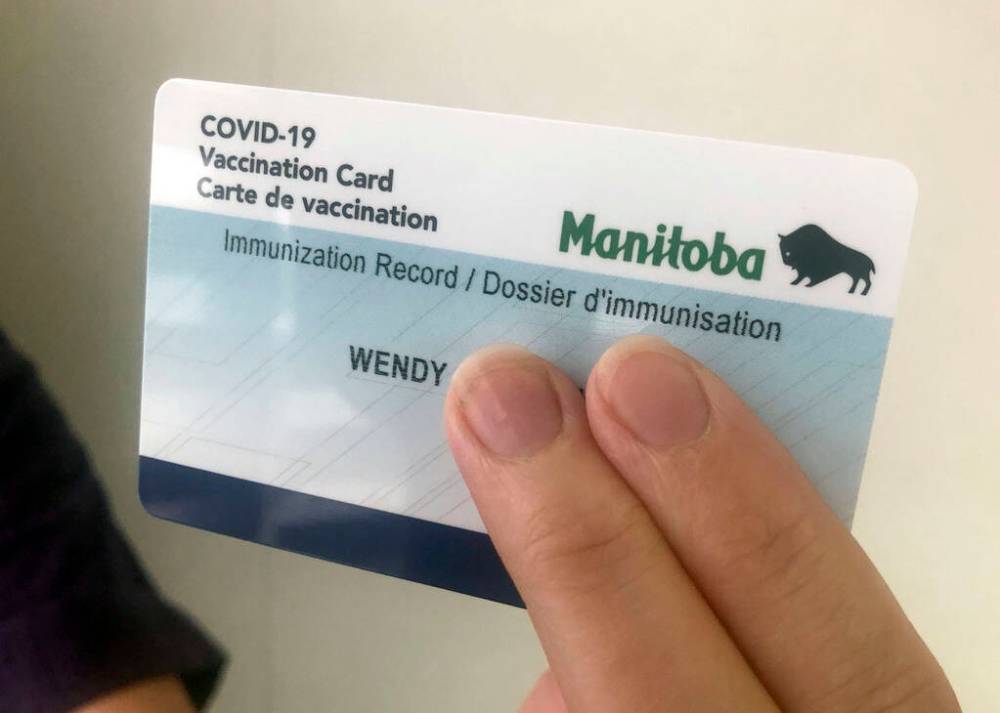The right idea, but for the wrong card
Advertisement
Read this article for free:
or
Already have an account? Log in here »
To continue reading, please subscribe:
Monthly Digital Subscription
$0 for the first 4 weeks*
- Enjoy unlimited reading on winnipegfreepress.com
- Read the E-Edition, our digital replica newspaper
- Access News Break, our award-winning app
- Play interactive puzzles
*No charge for 4 weeks then price increases to the regular rate of $19.00 plus GST every four weeks. Offer available to new and qualified returning subscribers only. Cancel any time.
Monthly Digital Subscription
$4.75/week*
- Enjoy unlimited reading on winnipegfreepress.com
- Read the E-Edition, our digital replica newspaper
- Access News Break, our award-winning app
- Play interactive puzzles
*Billed as $19 plus GST every four weeks. Cancel any time.
To continue reading, please subscribe:
Add Free Press access to your Brandon Sun subscription for only an additional
$1 for the first 4 weeks*
*Your next subscription payment will increase by $1.00 and you will be charged $16.99 plus GST for four weeks. After four weeks, your payment will increase to $23.99 plus GST every four weeks.
Read unlimited articles for free today:
or
Already have an account? Log in here »
Hey there, time traveller!
This article was published 09/03/2024 (645 days ago), so information in it may no longer be current.
With the worst of the COVID-19 pandemic presumably in the rearview, there are elements of the pandemic response which have become questionable. Not, perhaps, in terms of efforts made to prevent the spread of the novel coronavirus — most Canadians simply followed the science on that as it evolved — but in how public resources were put to that task.
In this case, it would seem proof-of-vaccination efforts in Manitoba amount to considerable overkill and financial waste.
The Free Press reported Monday that the province’s plastic proof-of-vaccination cards came at considerable expense, compared to a paper card: $1.67 per plastic card, to be precise, as opposed to less than a dime for paper. In all, the province spent about $6.2 million on the plastic cards.

FREE PRESS FILES
Manitoba COVID-19 vaccination card
In terms of a government budget, $6.2 million isn’t an enormous sum, but it’s not peanuts either. But the expense incurred for the cards is made worse for two reasons: the limits of their usefulness, and the way it bizarrely breaks with local tradition, vis-a-vis health cards.
Even at the height of the pandemic, it appeared clear that requiring proof of vaccination to enter some establishments was a temporary measure; the cards were always going to have an ephemeral role in the lives of Manitobans. In 2024, many of those pricey pieces of plastic bits have wound up in junk drawers across the province alongside old Blockbuster cards.
One wonders what the need was for such a hard, permanent product.
Certainly, it felt good at the time. Then, receiving the COVID-19 vaccine and be issued a shiny new card to prove it was a morale-boosting event which let Manitobans know we were rounding the corner, that life was slowly going to return to normal, that some restrictions could now be eased. And admittedly, the cost didn’t seem so great. In fact, some may have seen the creation of the glossy cards as some measure of proof our health system was taking the matter seriously. Appearances matter.
So, let us not dwell too deeply on whether or not spending the money on the cards back then was the “right” move. Perhaps it wasn’t, but certainly there were bigger mistakes at all levels of government during the worst of the pandemic.
Let us, instead, turn to the here and now, and ask ourselves: what happened to that idea?
New Manitobans, in 2024, are struggling to get their hands on Manitoba Health cards.
But even when they do, the card they receive is flimsy, fragile paper, same as it ever was.
Why?
It’s cheaper, we know that. Considerably cheaper. But Manitoba Health cards aren’t proof-of-COVID-vaccination cards. They’ll be used much more frequently and in many more scenarios. It’s very strange, then, that the provincial government was prepared to shell out for glossy, durable plastic for a temporary public health crisis, but not to suit the everyday needs of Manitobans. (Yes, there was a different provincial government in power then, but the current one appears to be in no rush to redesign things, and the paper health cards have been with us long before the days of the Pallister and Stefanson governments.)
Clearly, the capacity and drive to create plastic health cards for Manitobans exists. And even if they cost more up front, surely the extra durability of the plastic cards will mean fewer are made in the long run, as there will be less need to reprint them.
It would be more than worth the investment.


